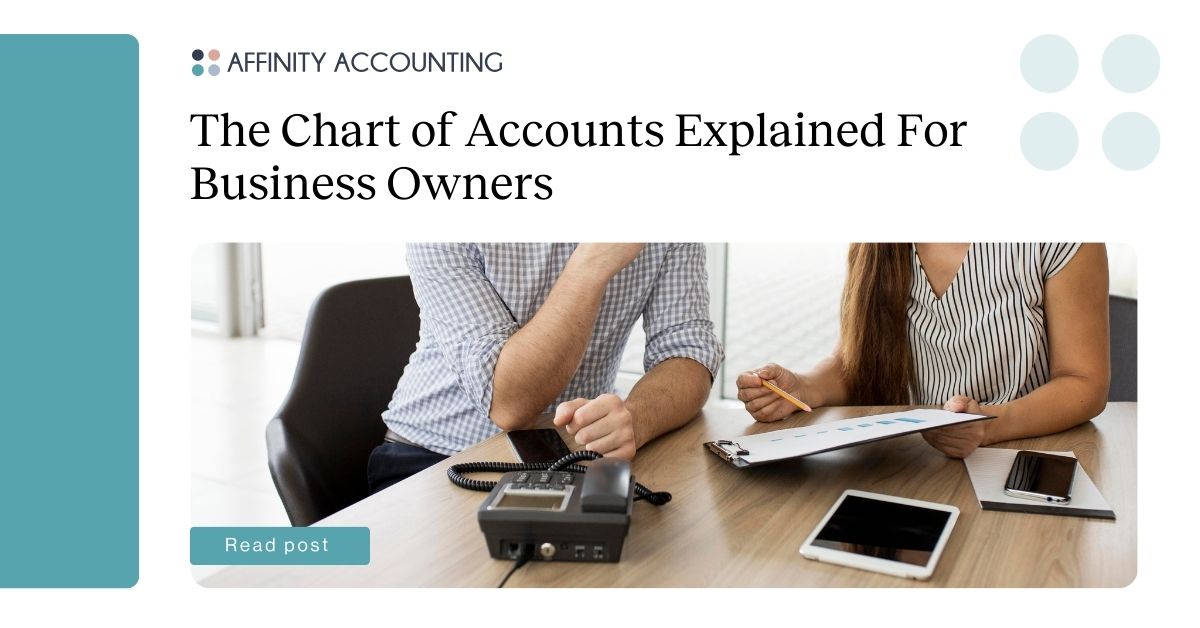If you run a business, you’ve probably heard the term “chart of accounts” tossed around. It might sound like something only accountants care about, but the truth is that the chart of accounts for business owners is the backbone of your finances.
Think of it like a well-organized closet. When everything has a place, you can find what you need quickly. When it’s messy, you waste time digging around, never quite sure where things go. The same thing happens in your books.
Let’s break this down together. By the end of this article, you’ll know exactly what a chart of accounts is, why it matters, and how to make yours work for you, not against you.
What Is a Chart of Accounts?
A chart of accounts is simply a list of all the financial buckets you use to track your money. It includes things like what you own (assets), what you owe (liabilities), the money you bring in (income), and the money you spend (expenses).
Here’s an example of what a chart of accounts would look like for a professional services business:
Assets
1000 Cash – Operating
1010 Accounts Receivable
1200 Prepaid Expenses
Liabilities
2000 Accounts Payable
2100 Credit Card Payable
2300 Client Retainers Held
Equity
3000 Owner Equity
3100 Retained Earnings
Revenue
4100 Billable Hours Revenue
4200 Retainer Revenue
4300 Project Revenue – Fixed Fee
4400 Consulting and Advisory Revenue
Cost of Goods Sold
5100 Direct Contractor Costs – Client Billable
5200 Subcontractor Fees – Client Billable
Expenses
6100 Payroll and Salaries
6200 Employee Benefits and Payroll Taxes
6300 Software Subscriptions and Tools
6400 Business Development and Client Meals
6500 Office Rent and Utilities
6600 Professional Insurance and Licenses
6700 Professional Development and Training
Why the Chart of Accounts for Business Owners Matters to Your Business
There’s a huge payoff of getting your chart of accounts right.
Firstly, you’ll get accurate profit and loss statements and balance sheets that you can trust. You’ll know which services, clients, or projects are making you money, and which are draining it.
Month-end accounting becomes faster and less stressful because transactions go to the right place automatically. It also helps with tax filings, payroll and even bank conversations. Everything becomes smoother because your numbers are organized.
For businesses where you might juggle hourly billing, retainers, or fixed-fee projects, this clarity is golden.
How to Tell If Yours Needs a Tune-Up
If you feel like your month-end financial reports result in more questions than answers, or you can’t tell which clients are actually profitable, then that’s a sign that you need to refresh your chart of accounts.
Another tell-tale sign is when you have duplicate or unused accounts and no one’s sure what goes where. Cleaning up your chart of accounts can save you a ton of time and headaches down the road.
How to Build A Useful Chart of Accounts
Decide What You Need To See
Ask yourself: Do I want to see profit by client? By service? By project? Your chart of accounts should make your most important reports easy to run.
Pick A Simple Numbering System
Many businesses use something like:
- Assets: 1000s
- Liabilities: 2000s
- Equity: 3000s
- Revenue: 4000s
- Cost of Goods Sold: 5000s
- Expenses: 6000–8999
Leave gaps between numbers so you can add accounts later without redoing everything.
Start Broad, Then Add Detail Where It Helps
For a small business, you may only need a handful of revenue accounts and expense buckets. Add more detail only if it will change how you make decisions. For example, separating subcontractor costs from payroll, if you rely on outside specialists.
Use Tags Or Classes For Deeper Reporting
If you want to see profit by client, use your accounting software’s class, project, or location tracking, instead of making a separate revenue account for every client. It’s cleaner and easier to maintain.
Clean Up Duplicates And Name Things Clearly
Merge accounts that mean the same thing. Rename confusing account titles so anyone on the team understands what gets posted where. For example, go for straightforward names, like “Direct Contractor Costs” rather than a nickname no one remembers.
Document And Test It Out
A one-page guide that explains what belongs where helps to keep your books tidy as your team grows.
Before rolling it out, post a month of transactions in a test file and run your key reports, so you can make adjustments before going live.
If you’re using QuickBooks or Xero, both offer templates to get started. Think of them as a jumping-off point, not a finished product.
Adjust As You Go
Your chart of accounts isn’t something you set and forget about. Review it at least quarterly, merge or remove accounts you’re not using, and limit who can create new ones. When someone requests a new account, ask: “What report will this help us run?”
That simple step prevents clutter.
How Affinity Accounting Can Help
If you’re preparing for a loan or audit, don’t go it alone. Or maybe you have complex revenue recognition or multiple entities.
An advisor can make sure your chart of accounts matches reporting standards and keeps your books audit-ready.
We help professional services firms, marketing agencies and small businesses design and clean up their chart of accounts, so things stay organized and financial reports make sense.
If you want help, reach out and book a meeting with our team today!


